Leon Medical Centers
Drexel University College of Nursing
University of Miami School of Nursing & Health Studies Stimulation Hospital
Navigating the Labyrinth of Compliance:
Illuminating the Path for Banks
In the world of banking, the challenges of maintaining compliance with federal regulations are as formidable as they are necessary. Among the myriad requirements, those related to lighting are particularly emblematic of the balancing act banks face — ensuring the safety and security of their guests and employees while striving for energy efficiency and aesthetic appeal.
Lighting in banking institutions is more than a matter of simple illumination; it is a critical component of a complex security apparatus. The federal government mandates specific lighting requirements, not as arbitrary benchmarks, but as carefully considered measures to deter crime and create a secure environment for customers and staff alike.
Compliance Challenges
Adhering to these requirements, however, is no simple task, presenting a multifaceted challenge, with each bank facing a unique set of obstacles. And the rapid pace of technological advancement in lighting and security systems means that what is compliant today may not be tomorrow. Banks must remain agile, adapting to new standards while managing costs.
Banks are not mere transactional spaces; they are also symbolic fortresses of trust and stability. The architectural design must integrate lighting solutions that meet compliance requirements without compromising the integrity of the design language that communicates these values.
Lighting systems are capital investments with long-term operational costs. Financial institutions must navigate the fine line between initial investment in compliant, high-quality lighting and the operational expenses, such as energy consumption and maintenance.
The push for sustainability adds another layer to the challenge. Banks must comply not only with safety and security regulations but also with environmental standards, opting for eco-friendly lighting solutions that can sometimes come at a premium.
Location also plays a significant role in lighting requirements. What works in an urban setting might not suffice in a rural or suburban context, where ambient lighting is less prevalent, and the risks differ. Requirements of zoning ordinances and overlay districts, proximities to airports, and landscape design play pivotal roles in building and site lighting design and selection.
The complexity of the regulatory environment cannot be overstated. Banks must navigate a labyrinth of local, state, and federal regulations, which can often be a moving target due to legislative changes and updates.
Navigation Strategies
To tackle these challenges, banks must invest in adaptive lighting technologies that can be easily updated to meet evolving standards. Smart lighting systems that can be controlled and adjusted remotely offer one such solution. Architects and designers should work closely with compliance experts to embed lighting requirements into the initial design phase, ensuring that functionality and form are aligned.
By conducting thorough lifecycle cost analyses, banks can understand the long-term implications of their lighting systems, making informed decisions that balance cost with compliance. Regular audits can also help banks assess their environmental impact and identify compliant lighting solutions that reduce both their carbon footprint and their energy bills.
Keeping in mind that there is no one-size-fits-all solution, banks and designers must partner to devise location-specific approaches, tailoring their lighting strategies to the unique challenges and risks of each site. They should also stay engaged with the regulatory process to anticipate changes and influence standards that impact operations.
The path to compliance for banks is as complex as the regulations that govern them. As architects, we play a pivotal role in this journey, not just by designing spaces that meet today’s standards but by envisioning environments that can adapt to the demands of tomorrow. It is through this lens that we must view the challenge of lighting compliance — not as a hurdle but as an opportunity to innovate, to secure, and to shine.
Fin Awards
Diversity at NELSON: Celebrating Asian American & Pacific Island Heritage Month with Food
What better way to celebrate Asian American Pacific Islander Heritage Month than with food! Native cuisine is one the of many ways we express our cultures and share it with others. Although we can’t bring the food to life, we are living and learning vicariously through our Teammates. This month features stories from Keo Ballerstein, Carey Ann Ragusa, and Joy Wang as they show us what they love about Lao, Filipino, and Chinese cuisine.
Keo Ballerstein – Lao New Year Celebration!

This year, the Lao New Year celebration began on Thursday, April 14th and ended on Saturday, April 16th. This festive occasion is a 3-day national holiday in Laos that is filled with a variety of Lao traditions and customs.
Growing-up in the United States from a very young age, I recall the epic celebrations. My father, at the time, was the resident of the Lao American Association of Florida. It was important for him to bring the Lao community together, to not only celebrate, but to educate first-generation Lao Americans about the history and culturally significant traditions of Laos. Ethnic folk dances, folk stories, blessing ceremonies, community soccer matches, and the ultimate Kataw matches were some of the activities that brought the community together during the weekend-long celebration.
And then, there was the food…
Food from Laos has many influences within Southeast Asia. Thailand, Vietnam, and Cambodia play a part in some of the picy and savory dishes. But, the staple and comfort food in the Lao culture is sticky rice (kow niew).
The memory of waking-up to its sweet aroma engulfing the house when my mother prepared it before delicately frying it with eggs, brings me joy. I was the kid who joyfully walked to school with a fried kow niew patty in hand. “Breakfast for champions,” I was told.
While I may have a more sophisticated palate now and enjoy dishes from other cultures, I can honestly say that no cuisine leaves me more complete than kow niew with grilled chicken (ping gai), chicken salad (larb gai), green papaya salad (tham mak hoong), and spicy tomato sauce (jeow mak len).
I look forward to celebrating with family and friends again this year. While it may not be in a grand scale like in yearspast, passing down the Lao traditions to my daughter is a wonderful way to embrace a promising future.
Happy Lao New Year! (Sabaidee Pi Mai!)

Carey Ann Ragusa – A Filipino Feast
 I’m Filipino and the best part of being Filipino is the food and the family gatherings we have. My dad used to own a restaurant and used to cook so many different types of Filipino food and the family would come to the restaurant just to be together, sing Karaoke, and celebrate the little things. It would never just be the immediate family. There would always be the extended family with the cousins, the Titos and Titas, the Lola and Lolo and always plenty of food. We would have lumpia, pancit, halo halo, sisig, kare kare and crispy pata, and so many other things that are too much to name.
I’m Filipino and the best part of being Filipino is the food and the family gatherings we have. My dad used to own a restaurant and used to cook so many different types of Filipino food and the family would come to the restaurant just to be together, sing Karaoke, and celebrate the little things. It would never just be the immediate family. There would always be the extended family with the cousins, the Titos and Titas, the Lola and Lolo and always plenty of food. We would have lumpia, pancit, halo halo, sisig, kare kare and crispy pata, and so many other things that are too much to name.

Joy Wang – Boiled & Pan Fried Dumplings (Jiǎozi & Guotie) with homemade chili!
 One of the best things about dumplings is the history of family all wrapped up in one. Growing up, it was almost a right of passage to be able to help parents, grandparents, aunts, and uncles in preparing for something so simple but so steeped in traditions. Learning about the individual ingredients that make up the filling, observing, trying out the tried-and-true methods passed down from generations prior, and understanding that there isn’t just one way to make a dumpling, because every family has their own variations was the best. It’s a time best associated with everyone coming together no matter age, gender, or race to try their hand at folding, pleating, or crimping a delicious little bundle into all shapes and sizes. To be able to pass on these types of traditions, introducing new ones to others, and setting down work and the busyness of daily life to enjoy a meal that’s always brought family style is something I always look forward to. Feeding others is also a plus as well 😊
One of the best things about dumplings is the history of family all wrapped up in one. Growing up, it was almost a right of passage to be able to help parents, grandparents, aunts, and uncles in preparing for something so simple but so steeped in traditions. Learning about the individual ingredients that make up the filling, observing, trying out the tried-and-true methods passed down from generations prior, and understanding that there isn’t just one way to make a dumpling, because every family has their own variations was the best. It’s a time best associated with everyone coming together no matter age, gender, or race to try their hand at folding, pleating, or crimping a delicious little bundle into all shapes and sizes. To be able to pass on these types of traditions, introducing new ones to others, and setting down work and the busyness of daily life to enjoy a meal that’s always brought family style is something I always look forward to. Feeding others is also a plus as well 😊
Beyond Hybrid: Why the Next Generation of Workplace Design Must Resonate
The modern workplace isn’t just competing with other offices; it must compete against all of the places where we work today: the comfort of home, the buzz and hospitality of coffee shops, and the ease of hotel lobbies and other public spaces.
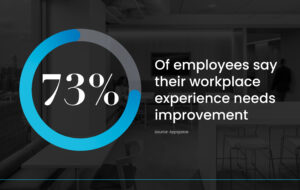
In today’s hybrid reality, 73% of employees say their workplace experience needs improvement (Appspace). That’s not simply a design problem—it’s a missed opportunity. To attract and retain top talent, boost performance, and unlock real estate value, workplaces must resonate. They must harmonize with how people naturally work and amplify what makes in-person experience worth showing up for. The right spaces make people feel connected to their colleagues and culture, in the flow as they move through their day, healthy in both body and mind, and valued as individuals.
At NELSON Worldwide, we define a resonant workplace as one that does more than just support the workday, but energizes it.
The Energy Imperative
Workplace energy has become the new barometer of success. A well-designed space can’t deliver if it sits empty because teammates opt to work elsewhere. We’ve found that the ideal range for high vibrancy—the level at which energy fuels culture and productivity—occurs when occupancy sits between 60% and 90%. But hitting that target means understanding more than just headcount. It requires deep insight into how teams work, when they collaborate best, and what kind of spaces support their rhythm.
Too often, organizations focus on enforcing attendance policies when they should be investing in alignment—ensuring space, policy, and behavior are in tune. When energy is up, collaboration, engagement, creativity follow.
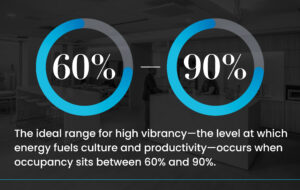
The Power of Purpose
There’s something intangible yet vital that gets lost in remote work: a sense of purpose. While virtual meetings keep the work moving, they can distance employees from the deeper “why” behind their contributions. That disconnect carries weight. When people feel connected to an organization’s purpose, the likelihood of retention increases, with Gallup reporting an impressive 15% increase in productivity.
Purpose, however, isn’t simply communicated in a memo—it’s experienced. The most resonant workplaces embed purpose into every square foot, from brand storytelling that reflects mission and values to spatial cues that reinforce company culture. In fact, 75% of employees see themselves as brand ambassadors. But to act like one, they need a physical space that reflects the brand they believe in.
Removing Friction, Creating Flow
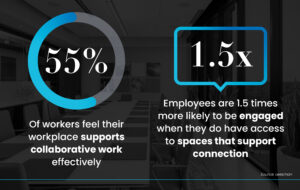
A resonant workplace enables people to do their best work without barriers. Many office environments create more friction than flow—whether it’s tech that won’t connect, poor acoustics, or the absence of quiet zones for focus. According to workplace experience research firm Leesman, only 55% of workers feel their workplace supports collaborative work effectively, yet, employees are 1.5 times more likely to be engaged when they do have access to spaces that support connection.
Flow doesn’t happen by accident. It’s the result of thoughtful design that responds to how people move through their day—offering seamless transitions between collaboration and concentration, between virtual and physical modes of working. It’s also about eliminating avoidable pain points: 36% of employees say slow or outdated technology is a major deterrent to returning to the office. Spaces designed with acoustics in mind are a unique advantage of the office, supporting both collaboration and the need to step away for video calls or focused conversations.
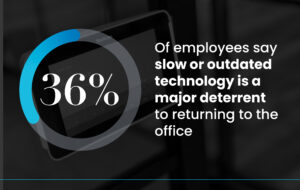
Wellness as Strategy
Wellness has moved from perk to priority. In 2024, McKinsey estimated the U.S. wellness industry to be worth $480 billion, growing by 5% to 10% annually. More telling, 82% of Americans now consider wellness a key priority—on par with global trends seen in the UK and China.
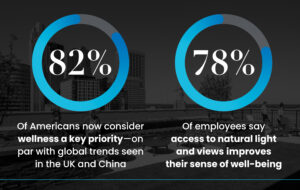
This demand for wellness must be reflected in workplace design. Features like natural light, greenery, ergonomic furniture, and calming environments aren’t just nice-to-haves; they’re performance drivers. Studies show biophilic design can boost productivity by 15%, while poor ergonomics can reduce it by up to 17%. And 78% of employees say access to natural light and views improves their sense of well-being.
Designing for wellness means making health effortless, baked into the workplace experience from the moment employees walk in, whether they’re settling into a quiet zone, refueling at a juice bar, or taking a break in a restorative outdoor space.
Making People Feel Valued
The final layer of a resonant workplace is emotional. People want to feel seen, supported, and appreciated—and that feeling needs to be reinforced not just by managers, but by the space itself.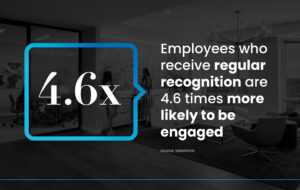
Recognition, when made visible through the built environment, has real impact. Salesforce reports that employees who receive regular recognition are 4.6 times more likely to be engaged. Whether it’s an achievement wall that celebrates team wins or communal spaces that foster social belonging, workplaces can make culture tangible in a way no remote work platform ever could.
Investments like a welcoming cafeteria, a fitness center, or thoughtful outdoor space aren’t just amenities. They’re signals that leadership values its people—and when people feel valued, they perform at a higher level.
A Strategic Asset, Not Just a Space
In a market defined by talent wars, real estate pressure, and shifting employee expectations, the workplace is no longer a cost center—it’s a competitive differentiator. A resonant workplace does more than function. It connects people to purpose, supports fluid workstyles, invests in well-being, and broadcasts culture.
For more than 40 years, our workplace team at NELSON Worldwide has helped organizations design spaces that don’t just meet business goals—they make people feel something. That’s what keeps them coming back. That’s what makes a workplace resonate.
Fast Food Goes Organic
While attending a wedding this past weekend in Santa Rosa, California, I did a double take when I drove by a drive-thru restaurant with grass growing from the roof and a water tower in the lawn. I quickly recognized the Amy’s logo – not because of my familiarity with the restaurant, but from the numerous Amy’s products (from soups to frozen pizza) I’ve consumed over the years. Known for their organic and gluten-free options, Amy’s Kitchen products are sold at most major grocery stores from Walmart to Fresh Thyme.
What I didn’t know was that in July of 2015, the brand opened their first drive-thru restaurant less than 15 miles from their headquarters in Petaluma, CA. Other than soda, everything on their menu is organic (with plenty of vegan and gluten-free options). But beyond their menu, the brand celebrates their roots in every touchpoint of the experience – from solar panels, to the living roof, to the tower collecting rainwater to help sustain the landscaping, the fast food prototype seems to be a perfect extension of the wholesome brand.
With today’s consumer more focused on overall wellness and transparency versus low calorie and low carb, a true drive-thru prototype built on a strong brand story and healthier options has the potential to gain popularity. So if you are ever in Sonoma, make time to check it out (…eating organic will make you feel better about the wine tasting that will be sure to follow)!
Photo Credit: Amy’s Drive Thru, KQED Food, Business Insider
Hanging Around
Being part of the Hospitality Studio, I am always interested in staying at unique and different lodging experiences when traveling. So, on a recent trip to the Pacific Northwest with my husband and friends, we journeyed a little further north than originally planned to spend the night in sphere tree houses. It was definitely worth it!
Located in a coastal rainforest on Vancouver Island, British Columbia, Canada, the spheres are the creation of Tom Chudleigh. We had a chance to meet Tom and see his workshop where he is currently constructing more sphere tree houses. He utilizes techniques from boat building when constructing and outfitting the spheres. Practically everything is made by Tom, even the hinges and locks for the windows and doors.
The spaces inside the spheres are incredible efficient with storage nooks in any “open” space. Each are equipped with a bed, seating and a kitchenette area enough to make coffee or tea in the morning. There is no running water in the spheres but the bath facilities are very close by. Each sphere is hung in middle of three trees in a way that doesn’t harm but allows the tree to continue to grow and thrive.
If you ever find yourself on Vancouver Island, I high recommend making the journey to forest and staying in a Free Spirit Sphere!
Photo credit: Free Spirit Sphere
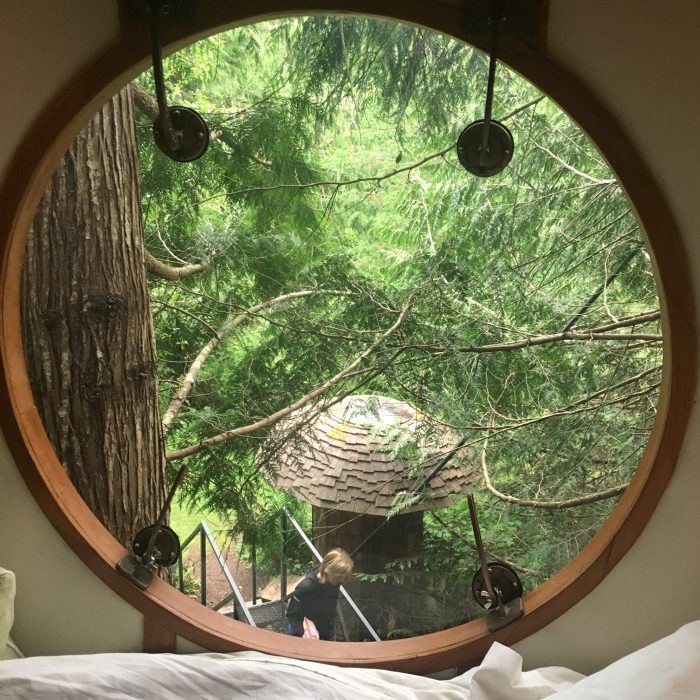
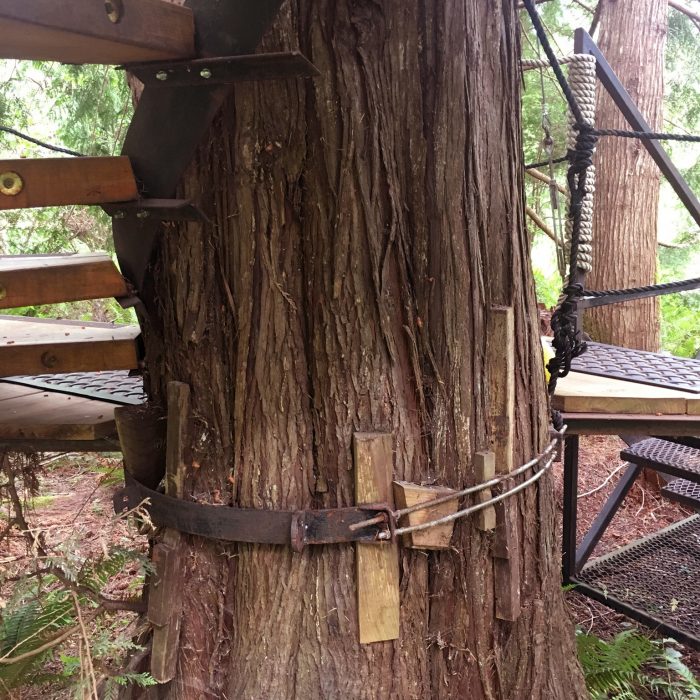
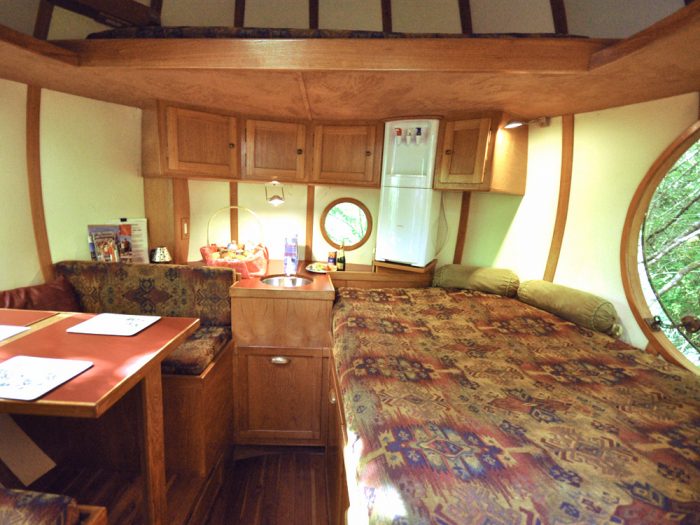
The Slow Death of the Dedicated Attorney Office
Some attorneys start to get nervous when workplace designers discuss the private office. Why? We live in a corporate world now dominated by open layouts and free address plans, some very successful and others, less so. As law firms continue to modernize and explore trends that were long ago adopted by other industries, we’re seeing more of them embrace progressive space concepts than ever before. Does this mean dedicated, private attorney offices are on their way out?